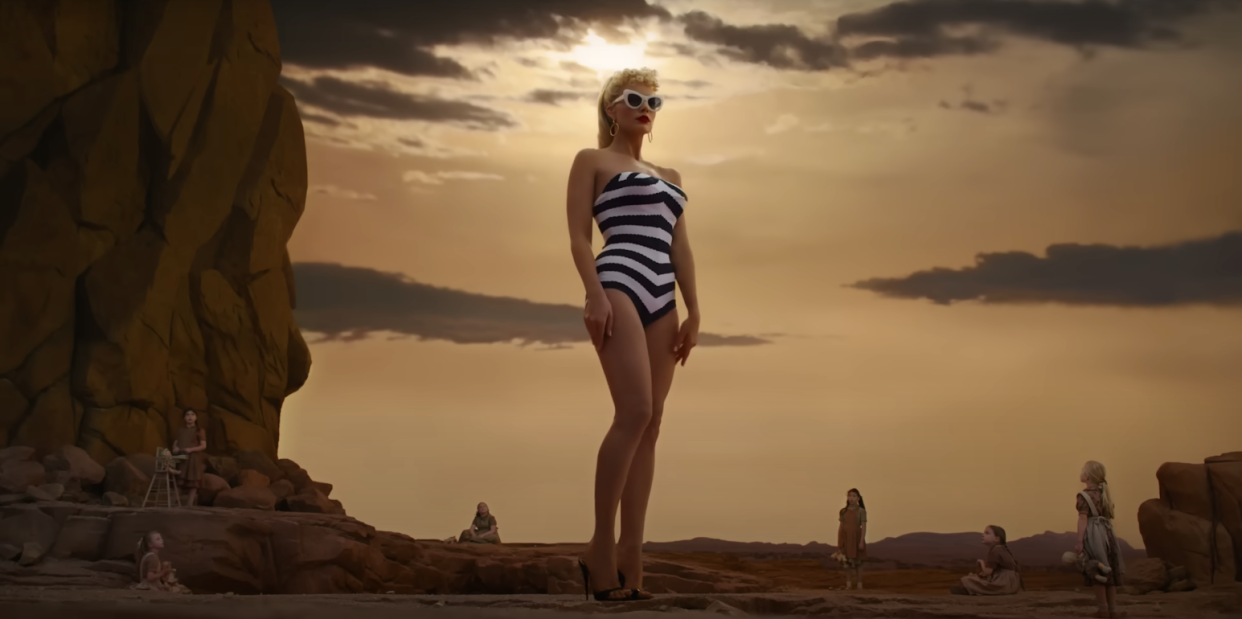Why are brands of today so bland?

- Oops!Something went wrong.Please try again later.
Ask anybody to name the 'golden age' of advertising, and they're likely to pick a decade between the 50s and 70s. But are brands of today really markedly blander than those of yesteryear?
We recently spoke to Teemu Suviala, Global Chief Creative Officer at the world’s largest brand and design agency, Landor & Fitch, about how he believes high levels of uncertainty, change and upheaval in the world have left most brands are afraid to show any real character, or take risks, for fear of appearing to be imperfect.
From showing up at Pride not in the true spirit of allyship (but for fear of not being seen to be involved), to worrying about the future and failing to react to the 'here and now', there are plenty of ways in which Teemu claims brands are getting it wrong. But some, such as IKEA and Microsoft, have recently shown how to successfully take risks.

Why are so many brands not taking risks in 2023?
We currently find ourselves in an era characterised by ongoing uncertainty and a complex web of interconnected crises. It’s no surprise that some brands are relying on the safe and secure, reaching for nostalgia and tradition. On the other hand, you have some brands who are looking too far into the speculative future, rather than focusing on the here and now.
The overarching message from both of these approaches is the sense that today simply can’t be faced; it’s too unpredictable and challenging to navigate an increasingly polarised and emotional landscape – particularly when consumers expect brands to take clear stands on key societal issues. The apprehension of coming across as imperfect is prevalent.
Why does this make them bland and not able to properly engage consumers?
A mindset that avoids risks places emphasis on stability and predictability at the expense of innovation and creativity, setting the stage for an inevitable slide into mediocrity. Being in the here and now and having real-time agility means you are involved in the conversation, are relevant, and can engage with your consumers meaningfully and with true character.
Why do brands need to take risks and live in the here and now?
Choosing to be bland sets a course for obscurity. Someone else will inevitably spot an opportunity to stand out and drive growth through differentiation. When that moment comes, your previously dependable, leading brand becomes increasingly irrelevant.
Dealing with the present can be challenging and chaotic, but it's the only thing that truly counts. This is how deeper connections are being built, whether you were a brand or human being.
Also, when a brand fully engages with the present, it becomes better equipped to tackle unexpected obstacles and shifts, seizing opportunities in new situations, and fostering innovation in real-time. Success lies in perpetually distinguishing oneself and staying nimble, coupled with an emphasis on shaping the culture together instead of merely conforming to it
How can brands walk the tightrope of taking risks and living in the moment, without over-exposing themselves?
Vulnerability is the most essential but underrated practice for brand-owners today. Brands need to embrace this and expose their true selves and convictions, both successes and flaws. This level of sincerity resonates with consumers in ways that contrived authenticity initiatives and symbolic gestures simply cannot achieve. In the end, the character of a brand will increasingly be defined by its multiple dimensions, including weaknesses.
Brands shouldn’t focus on being over-exposed, they should practise leaping more. For every safe idea that’s shared, there should be a wild, unthinkable one. Engaging in creativity is the most vulnerable act. It can feel scary to call for a playful spirit and child-like curiosity, be willing to pose unconventional questions, and explore freely without limits. And that’s exactly what we need to do, every single day.
Any examples of brands that are successfully taking risks and living in the now?
Brands who really stand out are those that see the confusion and cultural shifts of today as an opportunity, rather than a barrier. For instance, IKEA acknowledged this with a campaign that demonstrated its products were secondary to the personal relationships that people have.
There’s also been great examples of brands utilising current deep technology to convey deep empathy. Vivo Telecom springs to mind; it presented The Autism Journey, an AI tool that helps improve the connection and motivate more engaging everyday communication. between autistic people and their families by creating unique, personalized visual cards.
Another theme that’s emerged is brands celebrating social change, cultural revival, and restoration – and improving the day-to-day life of us human beings. There has been some fantastic work in this area, lately particularly from Microsoft which worked with brothers Ibrahima and Abdoulaye Barry to preserve the language of the Fulani people of West Africa by evolving its digital alphabet for use across Microsoft platforms. The work will not only preserve a beautiful and importance culture, but also promote literacy and education across the region.
Lastly, a prime example of a brand embracing vulnerability is Mattel's Barbie movie, which delves into the complex and controversial history of the doll and its representation of femininity. It has been some time since we've witnessed a unifying cultural moment of such magnitude that addresses significant societal issues.”
Why, in the age of AI, brands will increasingly need to connect in a human, emotional way that means showing weaknesses and multiple dimensions (good and bad)
With AI emerging as a tool for achieving perfection, a brand's unique character—shaped by human experiences and imperfections—will serve as its most significant differentiator. While we may not surpass robots in precision, we can excel in expressing emotions, embracing insecurities, and exhibiting vulnerability.
My message to brands is embrace adversity and randomness, talk about imperfection. Be friends with the unfamiliar and uncomfortable and you’ll build the future no one else is seeing today.

